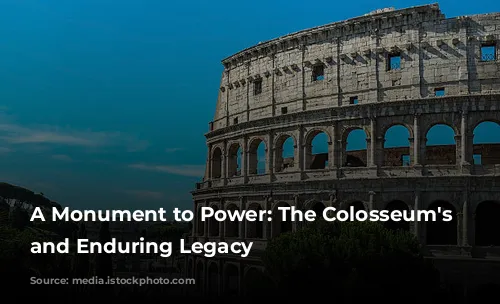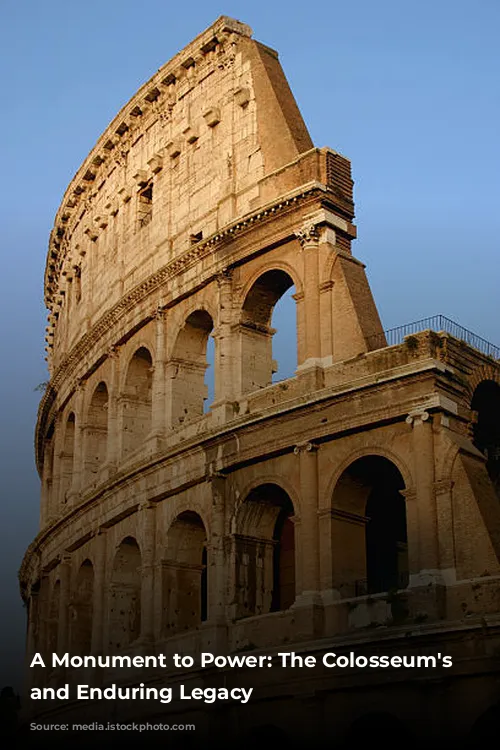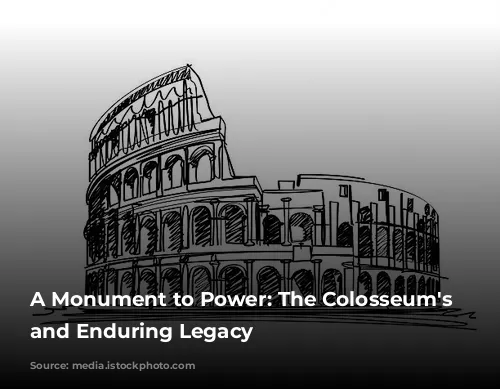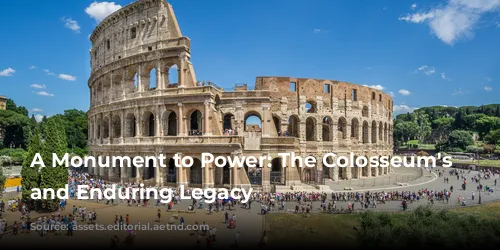The Colosseum, also known as the Flavian Amphitheater, is a colossal monument that stands as a powerful symbol of ancient Rome’s grandeur. More than just a venue for gladiatorial combat and animal hunts, it embodies the might and ingenuity of the Flavian dynasty, forever etched in history as a breathtaking architectural marvel.

A Dynasty’s Symbol of Resurgence
The Colosseum wasn’t built in a vacuum. Its construction was a response to the turmoil that had ravaged Rome. After the reign of Nero, a period marked by fire, plague, and civil war, the Flavian dynasty, led by Vespasian, rose to power. They embarked on a massive rebuilding program, using the spoils of war to restore the city to its former glory. The Colosseum, funded by the wealth amassed during the conquest of Jerusalem, served as a dramatic statement of Rome’s renewed strength and the dynasty’s ambitions.

An Architectural Masterpiece
The Colosseum stands as a testament to the Romans’ architectural prowess. This grand structure, built with an impressive mix of concrete, travertine, marble, stone, and timber, reached a height of 157 feet, towering over the city like a 15-story building. It could accommodate a staggering audience of 50,000 to 80,000 people, making it the largest and most intricate permanent amphitheater of the ancient world.
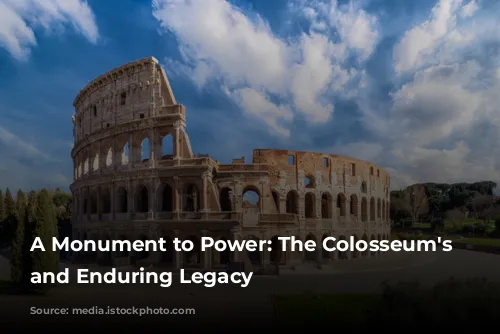
A Reflection of Roman Social Hierarchy
The Colosseum wasn’t just about entertainment; it was a meticulously crafted reflection of Roman society’s rigid social order. Seating was meticulously arranged, reflecting the hierarchical structure of Roman society. The emperor and senatorial nobility enjoyed the best seats, closest to the action. The Equestrian order, a prestigious group of merchants, artisans, and bureaucrats, occupied the next tier. The vast majority of Romans, including women, foreigners, and the poor and enslaved, were relegated to the higher, less desirable seats.
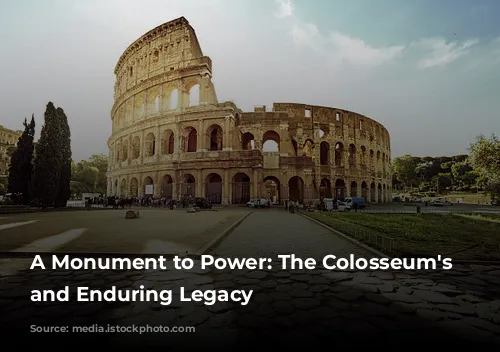
Innovation in Design and Engineering
Beyond its grandeur, the Colosseum was an innovative masterpiece of engineering. The use of concrete enabled the construction of this massive structure, a testament to the Romans’ mastery of this revolutionary building material. The Colosseum also featured an ingenious drainage system, allowing for the staging of mock sea battles in the arena. A retractable awning shielded spectators from the elements, while a complex network of underground tunnels, known as the hypogeum, concealed props, scenery, and even the participants themselves.
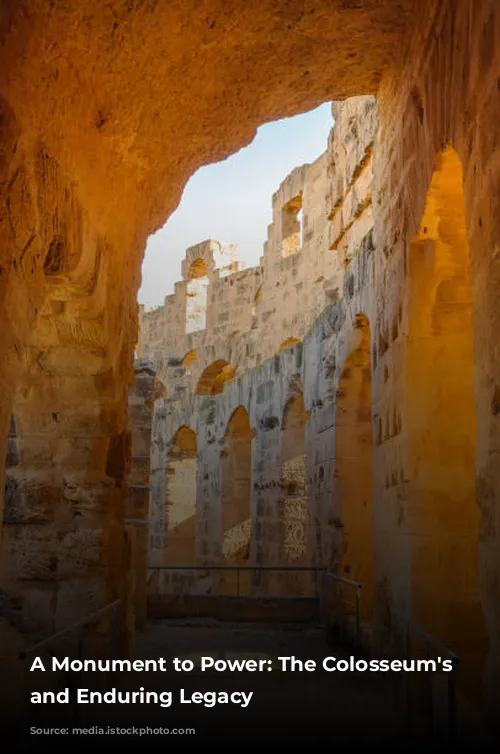
A Legacy That Endures
The Colosseum’s influence extends far beyond its historical significance. Its architectural features, like the use of arches for support, the elliptical shape, and the organized system of seating, have served as inspiration for modern sports stadiums around the world. Its enduring legacy is a testament to the Romans’ extraordinary ability to create structures that not only captivated their own era but have continued to inspire generations to come.
The Colosseum remains a symbol of Rome’s power and resilience. It embodies the spirit of a civilization that left an indelible mark on the world, forever reminding us of the enduring power of human ingenuity and ambition.




